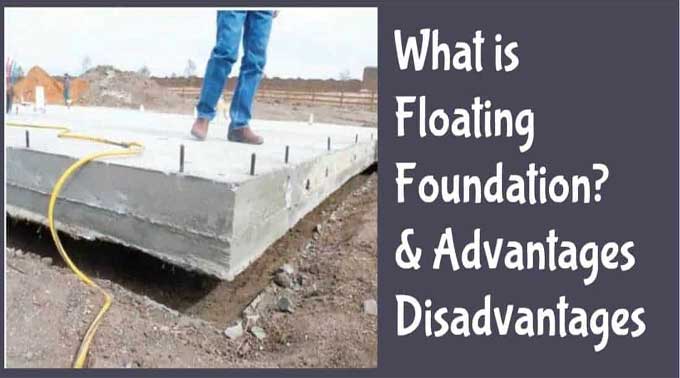
Define Floating Foundation or Balancing Raft

Floating Foundation is one kind of foundation type that is constructed for excavating the soil. This Foundation has to maintain soil excavation that the structure weight of the soil is almost equal to the total soil weight excavated from the ground adding the water weight.
Floating Foundation usually know as Balancing Raft, The building weight is almost the same as the full soil and water weight eliminated from the site before the construction building site.
Problems in Floating Foundation Design
There are 4 main problems in Floating Foundation Design and Construction. Those are mentioned below:
1. Excavation
2. De-watering
3. Critical Depth
4. Bottom Heave
1. Excavation
You must care about the excavation for the Foundation. Sheet piling, soldier piles, timber must support the sides of the excavation.
2. De-Watering
The examination of the level of the water table is essential before the excavation. De-watering is crucial to the low-level water table of excavation depth. You must keep an eye on the neighboring structures that are non-affected due to the low-level water table.
3. Critical Depth
If the soil shear strength is low, then excavation can make a theoretical depth limit using the formula of Terzaghi which is introduced in 1943. The formula is used to figure out the critical depth Dc.
4. Bottom Heave
The soil is excavated up to a particular depth. The low soil pressure below the particular depth causes heave formation. The bottom heave damages the foundation structure. You cannot stop heave formation but you can use some methods to reduce heave formation.
Main reasons for heave formations:
1. Plastic inward movement of the nearby soil.
2. Soil elastic movement as the existing overweight pressure is eliminated.
The Theory of Floating Foundation
Floating Foundation is to balance the soil removal weight by equal structure weight that has no effect on the structure. So this is the main theory of Floating Foundation or Balancing Raft Foundation.
We will talk about a top ground with the water table. You can excavate the ground at a certain depth where the water table is low. After that, you can construct a building that is equal to the removal of soil and water.
If the excavation depth is below the water table, then the total vertical pressure in the soil is the same due to the floating foundation weight balance. You have to give enough time after excavation to build a structure.
The effective vertical pressure under the excavation depth increased to some extent due to unbalanced weight in the construction time is called partly floating foundations in place of floating foundation.
Pros of Floating Foundation
a) Low capacity of Load-bearing: The low capacity of load-bearing is best for the floating foundation. If the building constructs over loose soil or the soil contains various compression degrees of compatibility.
Deep foundation Construction is bad for new soil and loose soil areas. However, the Floating Foundation can support over a large span of area. So there is no need for taking a heavy pressure load. Beams are needed for a strong Floating Foundation.
b) Adjacent buildings: Adjacent building foundation can pour Floating Foundation. The other building structures could be interfered with to build deep foundations.
c) Moisture: High moisture soil is best for Floating Foundation. The foundation above the earth's surface is better for creating a moisture barrier between the structure & ground rather than the foundation in the earth's surface.
d) Trenches: Floating Foundation needs much less space for digging since deep footer trenches are non-required. You must not need to disturb the earth below the below surface, there might be under groundwater which can lead to a flood to the Floating foundation.
e) Movement: Due to the earth?s movement, High vibration levels, or high underground moisture like various mining areas, railway tracks are compromised for Floating Foundation.


